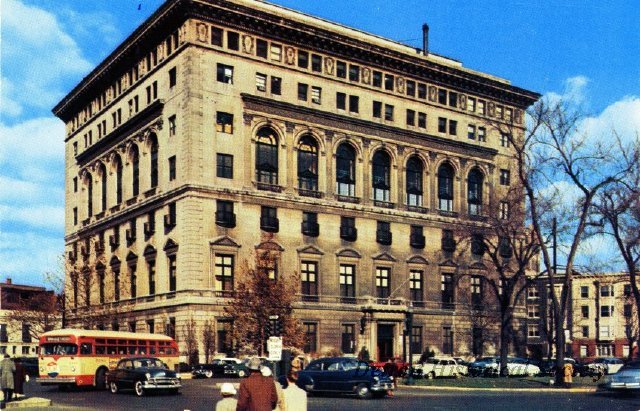The Detroit Athletic Club (DAC) was organized in 1887 as a place for men to congregate and watch or participate in sporting events of all kinds. The original DAC field and clubhouse, located on land bordered by Woodward, Cass, Forest Avenues and Canfield Street provided spacious grounds and a full gymnasium for track and field, baseball, basketball, football, bowling, cricket, and bicycle racing. The DAC was an eminent member of the Amateur Athletic Union of the United States (AAU), hosting its inaugural track and field competition and winning AAU national baseball championships in 1890 and 1892. Despite excelling at a wide array of sports, the DAC lacked the social facilities to generate sufficient revenue for its operations and was subsidized through 1913 by the generosity of its member and past president John Kelsey.
With the decline in membership of the DAC due to members’ interests shifting to business, especially the growing automobile industry, and away from amateur sports, the leadership decided there was a need for a rejuvenated sporting club. Henry B. Joy, president of the Packard Motor Car Company, led a group of prominent businessmen, many of them members of the automobile aristocracy, in planning for a new DAC building at 251 Madison Avenue. On January 4, 1913, the final act of the original DAC was to sign over the charter and all formerly won trophies to the new DAC board of directors, officially allowing them to use the renowned title for their new endeavor.
In 1913, the DAC board of directors commissioned architect Albert Kahn to design their new clubhouse. The ornately detailed six-story structure was inspired by Kahn’s trip to Rome and Florence to view Renaissance architecture. In particular, the large fourth floor windows were designed after the Palazzo Farnese in Rome. The structure was planned with three distinct sections: the first and second floors housed social rooms, the third and fourth floors were intended for athletics, and the fifth and sixth floors were residential rooms. Though changes and modernizations have been undertaken since its completion in 1915, the building’s layout remains basically as Kahn designed it.
Over the years, the DAC has provided financial assistance and training facilities to several athletes preparing for the Olympic Games. From its grand opening on April 17, 1915, the DAC was one of the first clubs of its type to allow the women of member’s families in the clubhouse. Over the years it has greatly expanded its programs and facilities for women and the entire families of members, though women were not allowed to become full voting members until 1986. On the club’s 30th anniversary in 1945, the members voted to curtail the celebration in order to open the building up for three days to over 1000 wounded veterans.

